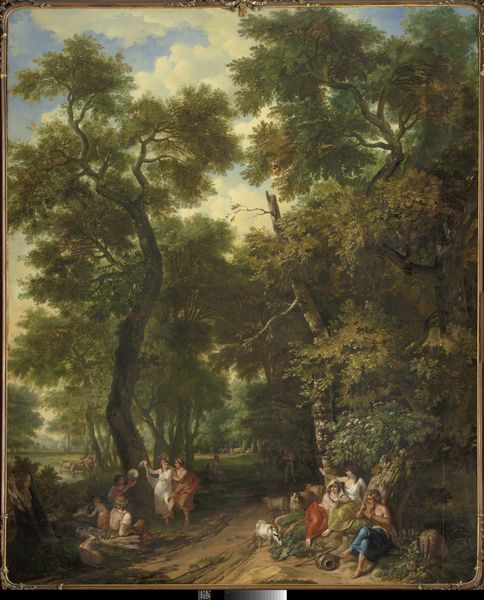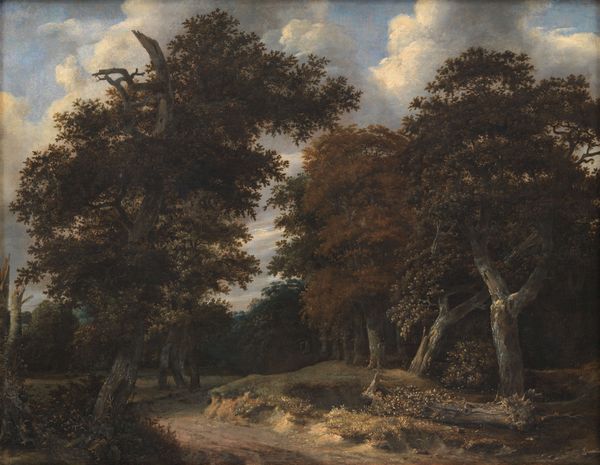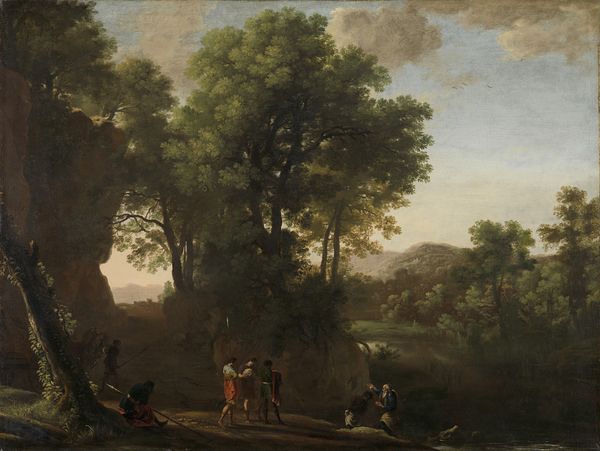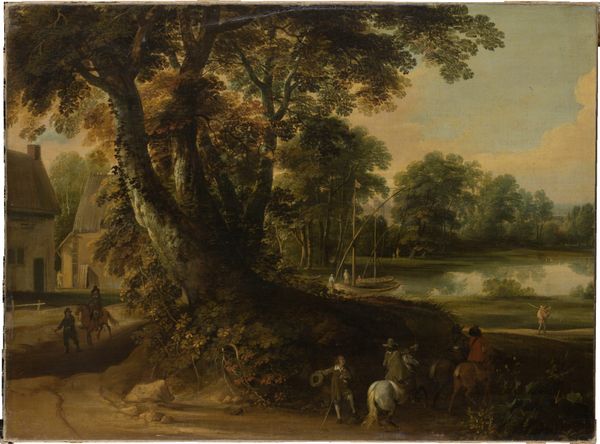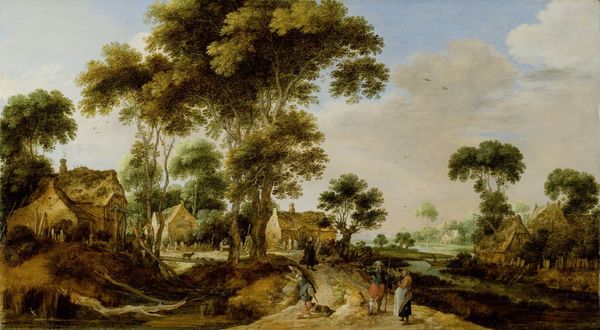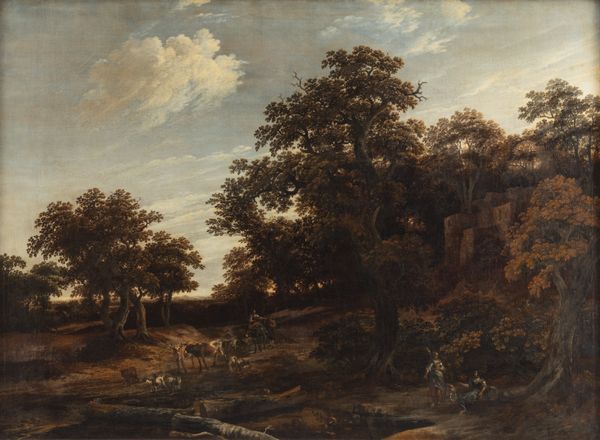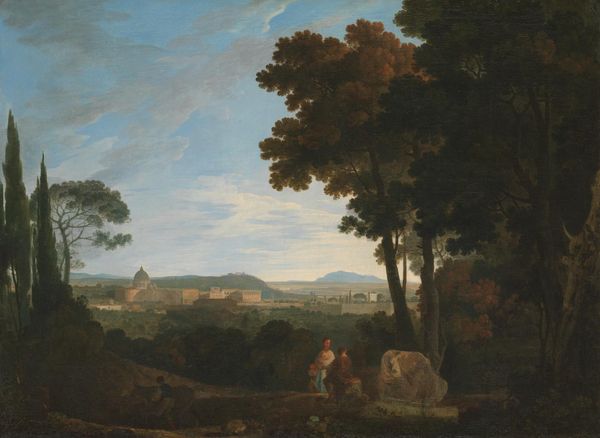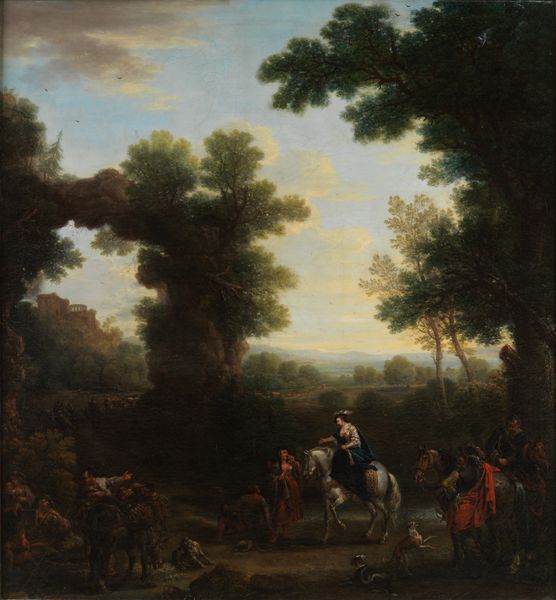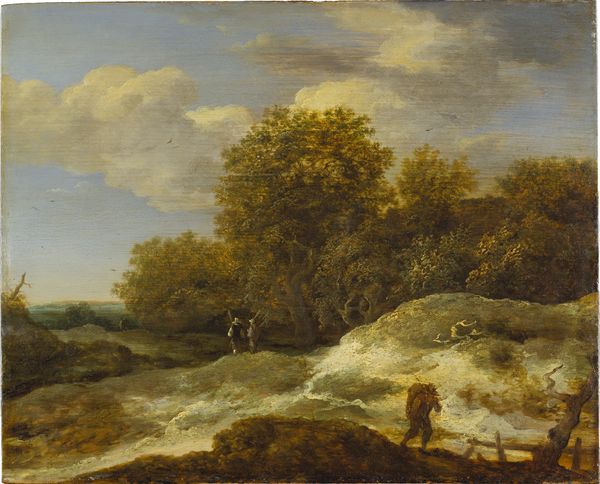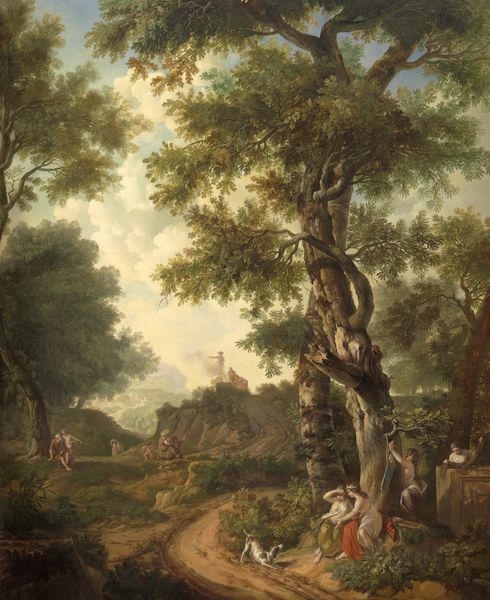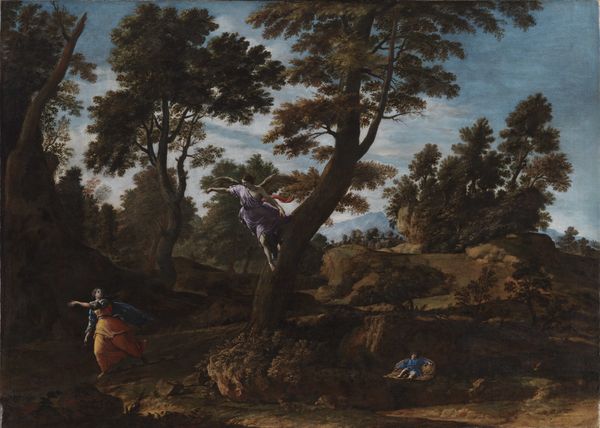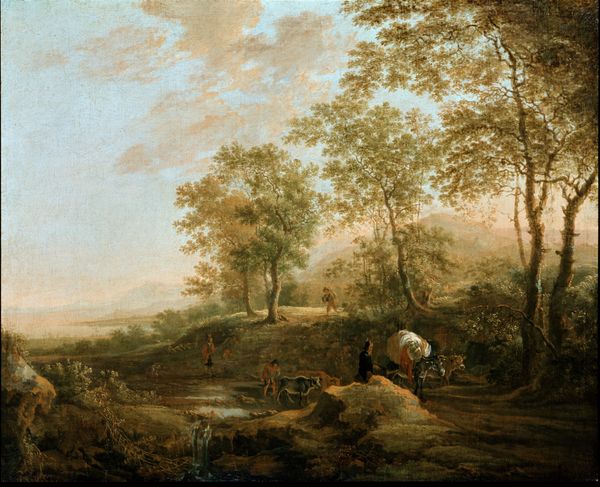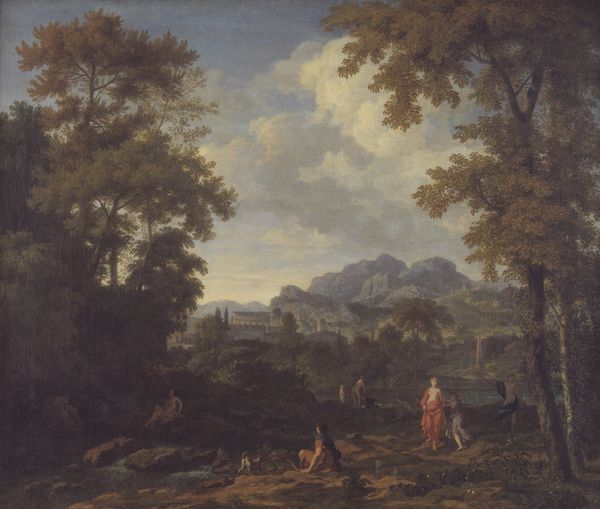
oil-paint
#
baroque
#
dutch-golden-age
#
oil-paint
#
landscape
#
figuration
#
coloured pencil
#
genre-painting
Dimensions: height 97 cm, width 82.4 cm, depth 6.5 cm
Copyright: Rijks Museum: Open Domain
Curator: So, we’re looking at Jan Looten’s "Forest Road", dating back to somewhere between 1650 and 1674. Painted with oil on canvas, it is a great example of Dutch Golden Age landscape painting. Editor: Immediately, the greyscale palette punctuated by autumnal ochre is arresting; I find myself wanting to sink into its quietude, like disappearing into a half-remembered dream. There’s an unsettling sense of fading light though, or impending rain perhaps? Curator: That’s interesting you mention the light. Looten was a master of atmospheric perspective. Look at how the density of the forest is softened by aerial perspective and how he uses the play of light and shadow to give depth to the woods and frame those figures nestled back there. The Dutch Golden Age was consumed with reflections of nature, and these are usually rife with allegories for a growing merchant society as it developed its sense of nationhood. Editor: Yes, but beyond historical considerations I am drawn to the universality of the forest motif. Doesn't it remind you of those primal feelings of childhood; a slightly frightening fairy tale, a world teeming with secrets and imagined monsters just behind every ancient tree? What are these figures actually doing there in the glade? A sort of mysterious domesticity. Curator: Perhaps taking a break from the hustle of daily life in the nearby city. Pictures like these reflected a yearning for a simpler, pastoral existence. Think about it, these works adorned the homes of merchants, becoming symbols of leisure and status. These dark paintings romanticize labor against a society obsessed with material labor, even as the trees they’re made from become materials themselves... Editor: I do enjoy imagining the scene in reverse. From us viewers, back through the sitters relaxing in nature, to the canvas hanging in some dark hallway centuries ago, eventually culminating back here, on display in front of new observers again. There’s something profoundly cyclical there. Curator: Absolutely. Jan Looten tapped into something fundamental in our relationship with nature, and in his rendering created an enduring reflection on the Dutch culture of his time. Editor: Making us now both, simultaneously, figures in a landscape and critics considering a captured landscape; the painted scene suddenly teeming with figures indeed.
Comments
No comments
Be the first to comment and join the conversation on the ultimate creative platform.
